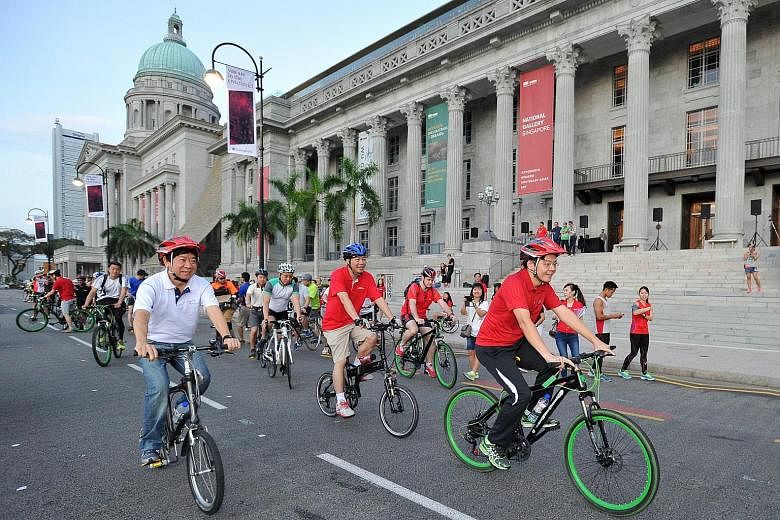Singapore's car-lite strategy will be stepped up in a big way, with more measures planned to wean drivers off cars, said National Development Minister Lawrence Wong in Parliament yesterday.
First, developers will be required to incorporate the needs of pedestrians and cyclists upfront in their development plans.
Second, seamless cycling routes to the Central Business District (CBD) could also be built from six housing estates that are within a 30-minute cycling distance to the city.
Third, the Government may even raise carpark charges to manage the use of cars.
These measures were unveiled yesterday in Parliament.
Mr Wong said the Land Transport Authority and Urban Redevelopment Authority would be incorporating these new building requirements for developers.
Developers will have to review the locations of bicycle parking facilities and their vehicular access points. They will have to take into account key pedestrian and cyclist access routes to minimise conflict among users, he said.
He added that these were critical for developments with high footfall, such as schools, shopping malls, office buildings and business parks.
"Through these requirements, we will ensure that our built environment is more conducive for pedestrians and cyclists," he said.
This was a concern raised by various MPs. Ang Mo Kio GRC MP Darryl David also said dedicated cycling routes should be built to connect housing estates to the city.
Mr Wong said the Government was looking at six such routes - from Bishan, Geylang, Marine Parade, Hougang, the Bukit Timah or Central area, and Queenstown.
These areas are within a 30-minute cycling distance to the CBD, and many are already linked by park connectors to the city. But Mr Wong noted that these routes were not seamless, and there were gaps along the way that would be plugged.
By doing so, people would be able to "get to their workplaces without having to drive".
Bishan-Toa Payoh GRC MP Saktiandi Supaat, Nee Soon GRC MP Louis Ng and Mr David also asked if more was being done to improve connectivity for cyclists and pedestrians within new and mature housing estates.
"The ideal scenario for such new towns would be entire vehicle-free zones where residents can walk, cycle and scoot as they go about their activities," said Mr David.
Mr Wong said within HDB estates, there would be more paths set aside for active mobility that would boost "first mile, last mile connectivity to MRT stations".
For instance, a 14km cycling network would be completed in Bedok next year.
Within the CBD, pedestrian sidewalks would be widened and dedicated cycling paths built to connect cyclists to major office developments, said Mr Wong.
Mountbatten MP Lim Biow Chuan asked if commercial vehicles could be allowed to park for free at night at under-utilised carparks such as those at sports stadiums.
Mr Wong said carpark charges here were already lower than those in other cities and the Government would not lower parking charges or make them free.
In fact, it may have to do the reverse and raise charges as Singapore becomes car-lite, he said.
"Free parking is not really free, free parking is a subsidy to the motorist, paid for by non-motorists," he said.


